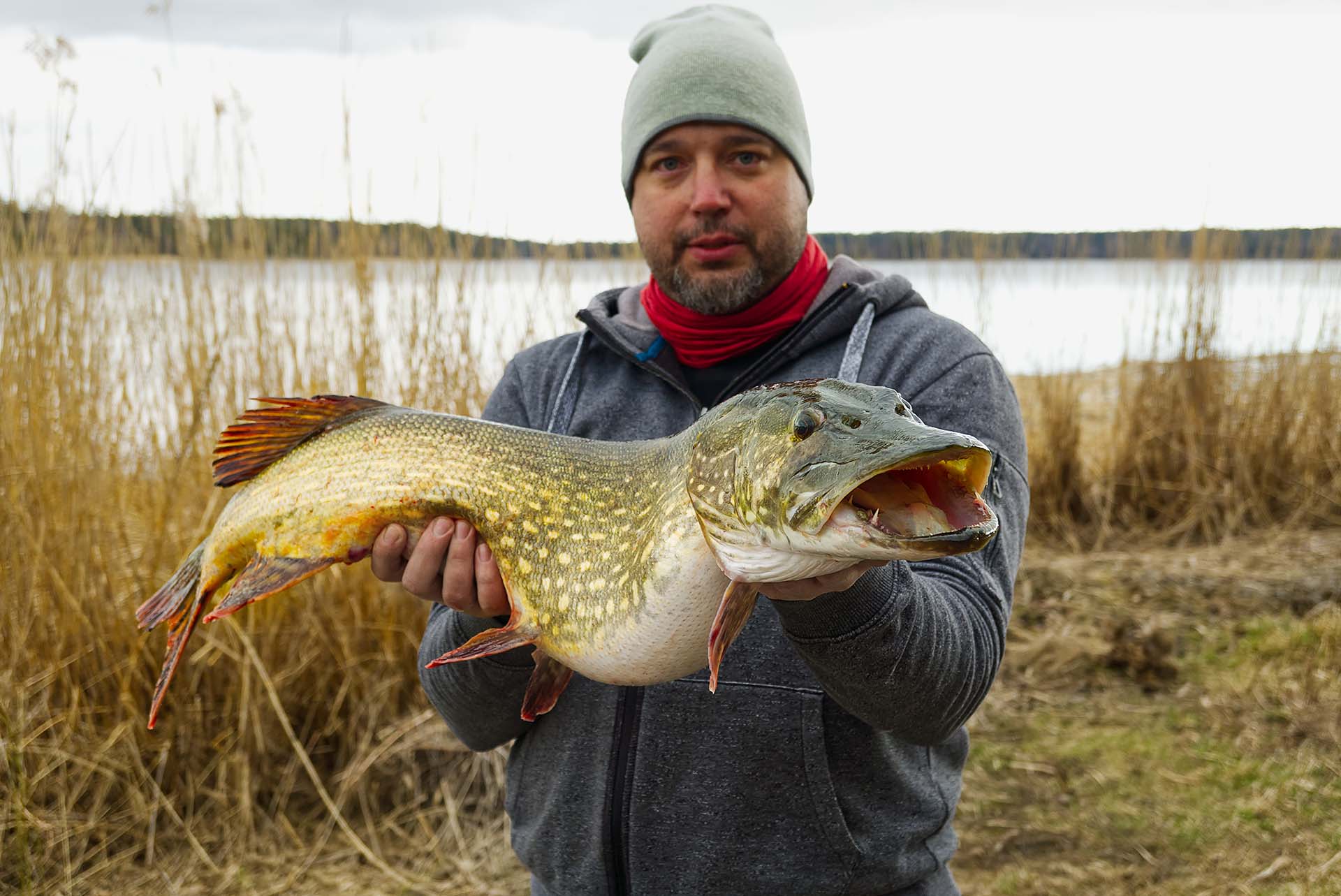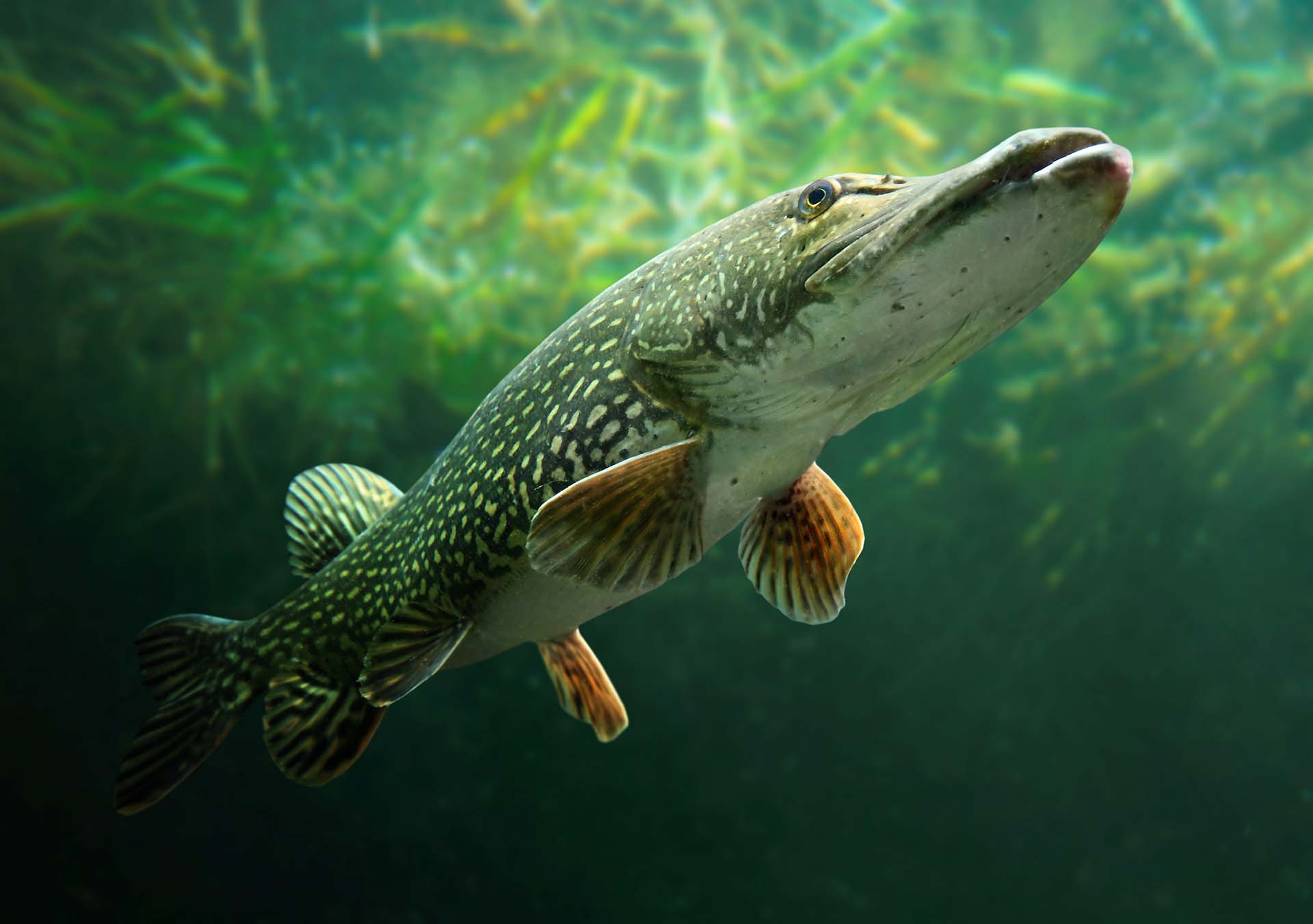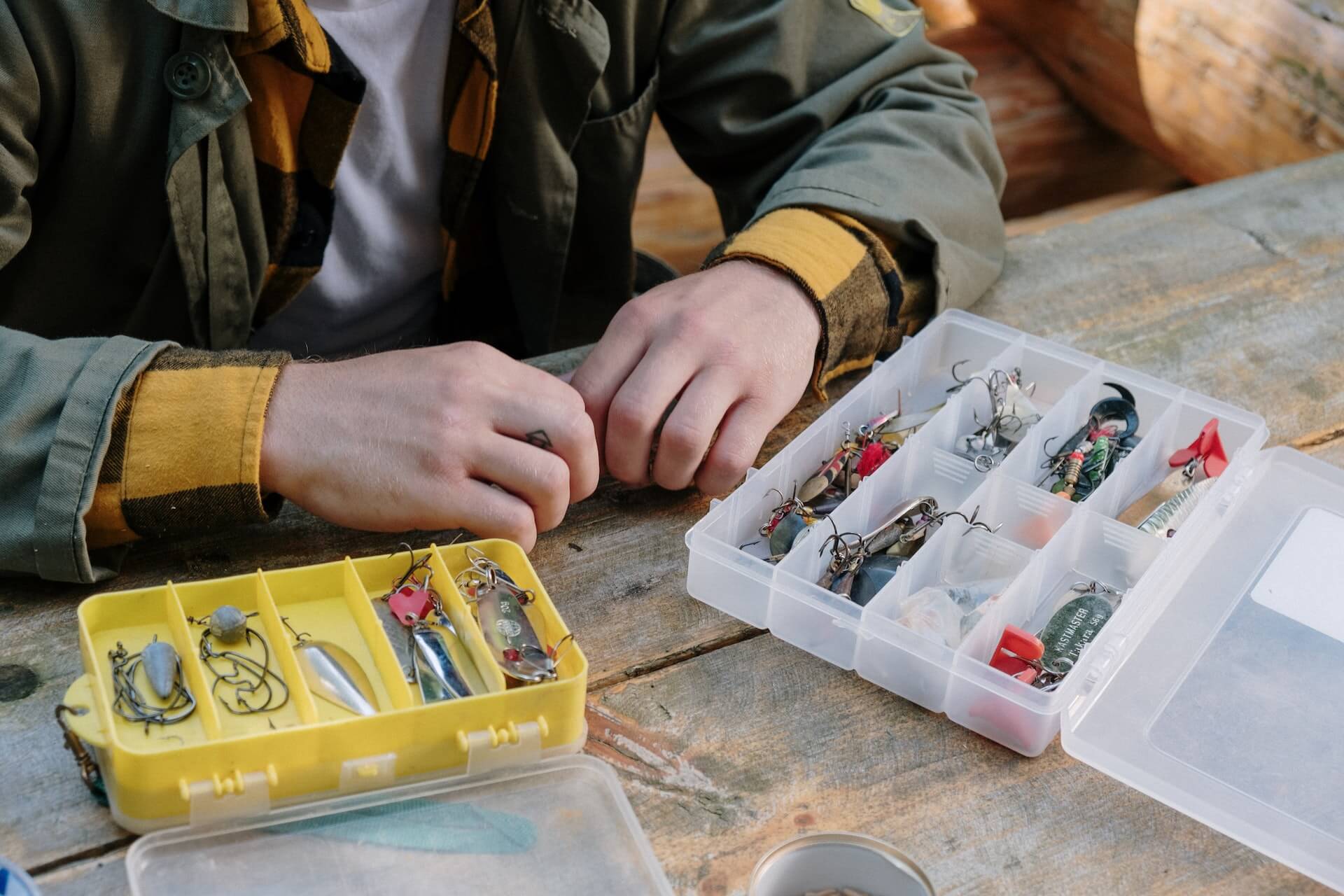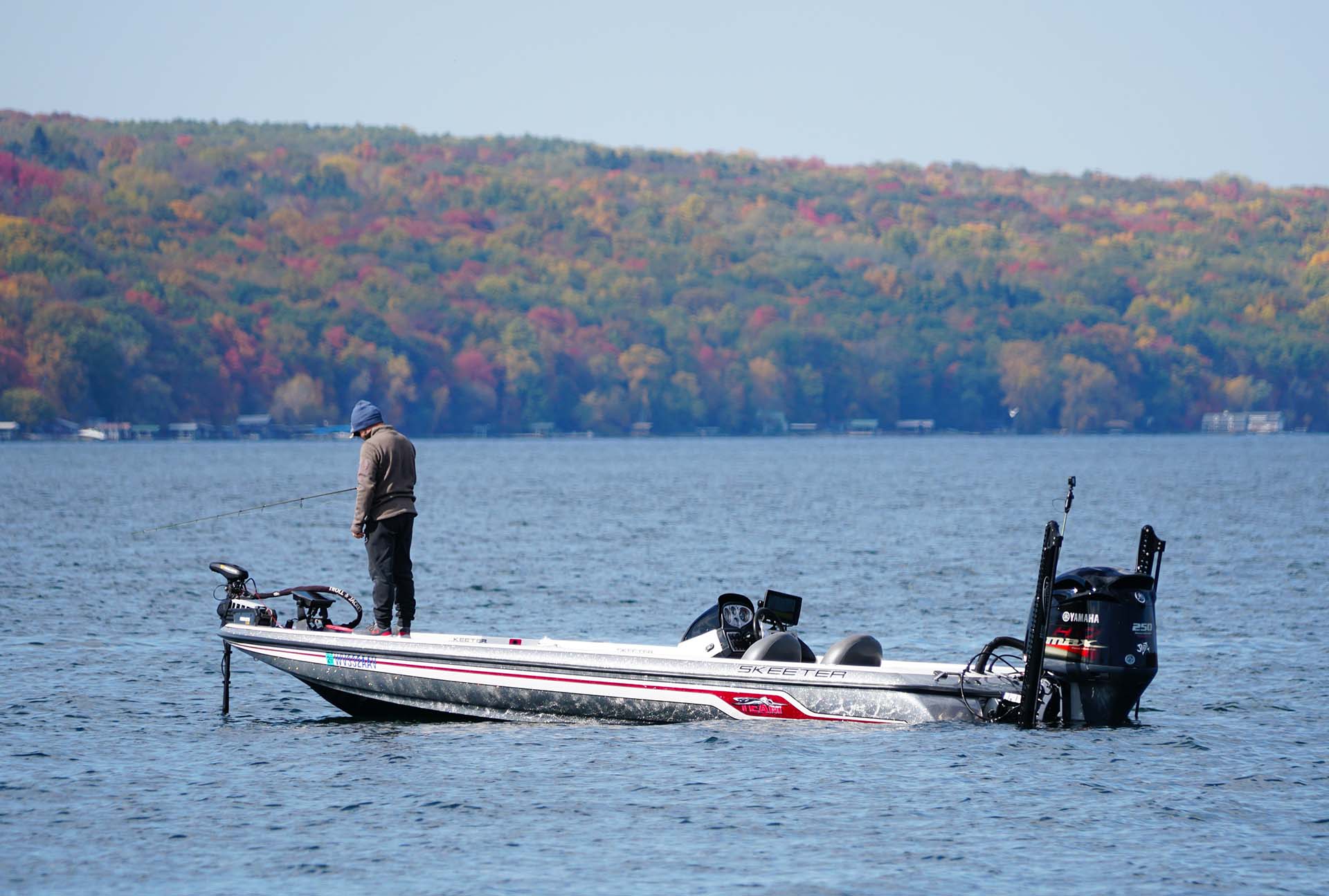Ever find yourself daydreaming about reeling in that monster muskellunge, the kind of catch that transforms an ordinary fishing tale into legendary status? Well, you’re certainly not alone – mastering how to catch muskie is a rite of passage for every serious fisherman. Let’s dive deep into the art and science behind landing one of these freshwater behemoths and turn those muskie dreams into a reel-spinning reality.
How to Catch Muskie?
In order to catch muskellunge, you can use both natural baits and artificial lures, but it’s crucial to adapt your tactics from spring spawning to winter chill. Mastering casting and retrieval techniques, including covering vast waters, optimal boat positioning, and the figure-eight maneuver, elevates the angler’s game.

Understanding the Muskie – A Brief Biology and Behavior Overview
In the fishing world, the muskie is considered legendary, a creature that has many nicknames such as ski or lunge, courtesy of angling slang developed over the years. Officially called the muskellunge, this magnificent fish species is a notable member of the Esocidae family, which also includes the following aquatic wonders:
| Pike | A ferocious predator, characterized by its elongated body and sharp teeth |
| Pickerel | Smaller but equally as aggressive, often found in weedy areas of freshwater |
| Mud Minnows | These are relatively small, resilient fish that can tolerate low oxygen levels |
The Muskellunge Has a Streamlined Form That Can Reach Great Lengths
The muskellunge is characterized by its long, sleek body and flattened head, a build engineered for swift and efficient hunting. These impressive fish can grow over 50 inches (127 cm), boasting a captivating blend of green and brown hues with stripes or spots that decorate their robust bodies.
This Is a Freshwater Species Native to North America
Muskies are true North American gems, primarily gracing the fresh waters of the northern United States and Canada. Their preferred abodes are clear, vegetated lakes, and large, slow-moving rivers where they find both the solace and the bounty of prey they require. Here are some of the well-known hotspots when it comes to this species:
- Lake Saint Clair,
- Leech Lake,
- Lake of the Woods,
- The Saint Lawrence River,
- The Wisconsin River,
- The Niagara River.
Not Many Creatures Pose a Threat to This Fascinating Species
In their natural habitats, adult muskies sit atop the food chain, with few threats to worry about. Their diet is diverse but fish-centric, selecting their prey based on size and availability. Humans and occasionally large birds of prey, like bald eagles, are the only notable threats to adult muskies.
Younger muskies, however, need to be wary of their own kind, as well as largemouth bass, northern pike, large trout, and birds of prey who wouldn’t mind some muskellunge for dinner. Therefore, during their lifespan of around 12 to 18 years, this fascinating creature undergoes a transformative journey from being hunted to becoming the formidable hunter in the shadowed depths of North America’s freshwater bodies.

Natural vs. Artificial Baits – What’s the Right Choice?
When it comes to landing a formidable lunge, anglers have a choice to make between natural and artificial baits. Given their predatory and opportunistic feeding habits, there are plenty of approaches that can be remarkably effective.
These creatures have a penchant for prey like cisco, shad, suckers, and grass carp, making live bait a classic and effective choice. In the crisp air of the fall season, many anglers find success drifting or casting natural bait, with white sucker fish proving particularly enticing to the ever-opportunistic lunge. But the age-old debate about using natural or artificial baits still rings true, each approach with its unique advantages and disadvantages:
| Type | Pros | Cons |
|---|---|---|
| Natural Baits | They mimic real prey and trigger predatory instincts effectively | They need to be kept alive and fresh |
| Artificial Lures | There's a diverse range of actions and they can be used repeatedly | Can be less enticing than live bait in certain conditions |
Outweigh the Pros and Cons by Considering Your Location and Preferences
At the end of the day, the choice between live and artificial offerings isn’t black and white – it hinges on factors like your specific location and personal fishing style. Each angler’s touch, the local ecosystem, and the specific conditions of the day play pivotal roles in tilting the scales.
The Complete Guide to Muskie Lures
Alright, let’s shift gears and dive into the colorful and varied world of effective lures for an unforgettable muskie catch. We know that these freshwater behemoths have a broad diet, which opens the door for a diverse range of not only natural baits but also artificial lures.
The Most Effective Types of Lures for Muskellunge
In the quest to land a lunge, the choice of lure can be a game-changer. Each type is a unique concoction of art and science, designed to mimic the diverse prey that these apex predators feast on. Here’s a closer look at some top-performing lures:
- Jerkbaits – lures such as those included in the XFISHMAN Jerkbait Kit excel at imitating the erratic movements of injured fish, triggering the predatory instincts of muskies,
- Crankbaits – pieces such as the Basskiller Crankbaits are known for their wobbling motion and diving capabilities, enabling them to reach the deeper haunts where the biggest skis lurk,
- Surface baits – nothing beats the adrenaline rush of one of these majestic creatures striking at the surface, and my personal favorite for this approach is the AGOOL Topwater Kit,
- Spinnerbaits – the vibration and flash of pieces such as those included in the Shaddock Fishing Spinner Baits Kit can be used in a variety of conditions.
It’s Important to Take Size and Color Into Consideration
There’s a buzz in the angler community about the ideal size and color of lures for landing that trophy muskellunge, but here’s the kick – it’s really not set in stone. Sure, it’s often best to lean towards bigger lures, but the golden ticket is adaptability.
That subdued color palette on one sunny afternoon might not hold the same charm under cloudy skies or in murky waters. And then there are the night fishing lures, which pose a completely new set of challenges. The water clarity, weather conditions, and even the mood of our friends on any given day can sway the odds. Therefore, having a diverse arsenal in your tackle box remains the real secret sauce to consistent success.
It’s All About Adjusting the Speed and Lure Retrieval
Last but certainly not least, it’s not just about what you cast but how you reel it in. Depending on the water temperature and the muskie’s activity level, altering the retrieval speed and pattern can turn a quiet day on the water into an exhilarating battle with one of the freshwater’s most formidable opponents.

How to Catch a Muskie Using Seasonal Strategies – Adapting to the Time of Year
As the rhythms of nature change, so does the strategy needed to coax these freshwater behemoths from their haunts. So, let’s venture through the seasons, unveiling the secrets that each one holds:
Spring - Spawning and Early-Season Tactics
Spring breathes life into the waters, heralding the awakening of these silent giants from their winter drowsiness. The spawning season starts sometime during April, so it’s best to focus on the shallows, where these predators head for reproduction. The water is cool, and the fish, though active, are somewhat lethargic. Because of that, it’s best to use slow-moving, brightly-colored lures.
Summer - Dealing With the Heat and Active Muskies
With warmer waters, their metabolism boosts, leading to increased feeding. It’s time to explore the deeper haunts as they seek refuge from the heat while staying close to their feeding grounds. Use fast-moving lures and diversify your retrieval techniques. The key is to mimic the energetic prey that these fish are after during the warm months.
Fall - Take Advantage of the Pre-Winter Feeding Frenzy
Fall is the golden season for anglers aiming to snag a ski. These predators are gearing up for the colder months, leading to a feeding frenzy. The waters are teeming with life, and the key is to mimic the abundant prey. Larger lures and a varied retrieval speed can be magic, capitalizing on their aggressive feeding to land that trophy catch.
Winter - Challenges and Opportunities of Cold Weather
Winter casts a serene spell on the waters, but beneath the stillness, the opportunities are ripe for the patient angler. The cold slows down the ski, but it doesn’t dull their predatory edge. Focus on deeper waters and slow your retrieval speed. It’s a game of patience, but with the right lure and technique, the silent, icy waters can suddenly erupt with the thrashing energy of a lunge.
Essential Gear for Muskie Fishing With Lures and Baits
As we delve deeper into the mystique of hooking one of freshwater’s most iconic predators, it becomes abundantly clear that the right gear is an angler’s silent ally. So, let’s navigate through the essentials, outlining the gear that turns the odds in your favor.
The Basics – Rods, Reels, and Line
A 7′ light-action fishing rod strikes that perfect balance of control and distance. I personally use the KastKing Crixus rod and reel combo, but any high-quality piece with similar features can do the trick, as long as it’s paired with an appropriate spinning or baitcasting reel. As for the line, microfilament lines boasting 50 to 80-pound strength offer the finesse to outwit and the power to conquer.
Additional Tools and Accessories for a Seamless Experience
Fishing nets, specifically those with a larger, deeper design, become the unsung heroes during the final moments of the catch, cradling the ski with grace. Pliers and hook removers are the backstage crew, working in silent harmony to ensure a seamless, efficient hook removal, safeguarding both the angler and the majestic creature at the end of the line.

Tips for Effective Casting and Retrieval
To end on a high note, let’s arm you with some additional tips that will surely elevate your game to the next level:
- Experiment with fan casting to explore a wider area and tap into the ski’s territory,
- Trolling on a fishing boat can also be an efficient way to cover more ground,
- When a lunge is hot on your lure’s tail, the figure-eight maneuver at the boat side can turn a follow into a fierce strike,
- Switch up the speed, action, and depth of your lures when things aren’t working,
- Pay close attention to the weather and water conditions, always adjusting your fishing technique according to these factors.

Wrapping up the Dance With the Elusive Muskie
From the early blooms of spring to the serene chill of winter, there are plenty of effective approaches to land yourself one of these majestic creatures. With these insights tucked in your angling arsenal, the elusive ski isn’t just a whispered legend but a tangible dream, waiting to erupt from the silent waters into the tales of triumph. Good luck!









